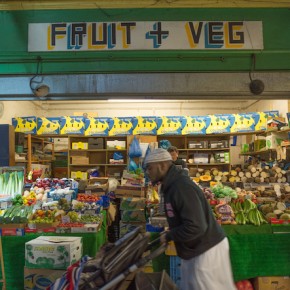There was a gypsy family always roaming between Windsor and London. The first words taught to their youngest child were “Romany rye!” and these it was trained to address to me. The little tot came up to me, a little brown-faced, black-eyed thing, and said, “How-do, Omany ’eye?” Great was the triumph, rejoicing and laughter of the mother and father, and all the little tribe.
To be familiar with these wanderers, who live by dale and down, is like having the bees come to you, as they did to the Dacian damsel, whose death they mourned. It is like the attraction of the wild deer to the fair Genevieve. Or, if you know them to be dangerous outlaws, as some are, it is like the affection of serpents and other wild things for those whom nature has made their friends, and who handle them without fear.
They are human, but in their lives they are between man as he lives in houses, and the bee and bird and fox. I cannot help believing that those who have no sympathy with them have none for the forest and road, and cannot be rightly familiar with the witchery of wood and wold.
There are many ladies and gentlemen who can well-nigh die of a sunset, and be enraptured with “bits” of color, and captured with scenes, and to whom all out-of-doors is as perfect as though it were painted by Millais, yet to whom the bee, bird and gypsy and red Indian ever remain in their true inner life strangers. And just as strange to them, in one sense, are the scenes in which these creatures dwell; for those who see in them only pictures, though they be by Claude and Turner, can never behold in them the fairy-land of childhood.
Only in Ruysdael and Salvator Rosa and the great unconscious artists lurks the spell of the Romany, and this spell is unfelt by Mr. Cimabue Brown. The child and the gypsy have no words in which to express their sense of nature and its charm, but they have this sense, and there are very, very few who, acquiring culture, retain it. And it is gradually disappearing from the world, just as the old delicately sensuous, naïve, picturesque type of woman’s beauty—the perfection of natural beauty—is rapidly vanishing in every country, being replaced by the mingled real and unreal attractiveness of “cleverness,” intellect, and fashion.
No doubt the newer tend to higher forms of culture, but it is not without pain that he who has been “in the spirit” in the old Sabbath of the soul, and in its quiet, solemn sunset, sees it all vanishing. It will all be gone in a few years. I doubt very much whether it will be possible for the most unaffectedly natural writer to preserve any of its hieroglyphics for future Champollions of sentiment to interpret.

In the coming days, when man shall have developed new senses, and when the blessed sun himself shall perhaps have been supplanted by some tremendous electrical light, and the moon be expunged altogether as interfering with the new arrangements for gravity, there will doubtless be a new poetryl. Yet even then, weary scholars will sigh from time to time, as they read in our books of the ancient purple seas, and how the sun went down of old into cloud-land, gorgeous land, and then how all dreamed away into night! Gypsies are the human types of this vanishing, direct love of nature, of this mute sense of rural romance, and of al fresco life, and he who does not recognize it in them, despite their rags and dishonesty, need not pretend to appreciate anything more in Callot’s etchings than the skillful management of the needle and the acids. Truly they are but rags themselves; the last rags of the old romance which connected man with nature. Once romance was a splendid mediæval drama, colored and gemmed with chivalry, minnesong, bandit-flashes, and waving plumes; now there remain but a few tatters.

Yes, we were young and foolish then, but there are perishing with the wretched fragments of the red Indian tribes mythologies as beautiful as those of the Greek or Norseman; and there is also vanishing with the gypsy an unexpressed mythology, which those who are to come after us would gladly recover. Would we not have been pleased if one of the thousand Latin men of letters whose works have been preserved had told us how the old Etruscans, then still living in mountain villages, spoke and habited and customed? But oh that there had ever lived of old one man who, noting how feelings and sentiments changed, tried to so set forth the souls of his time that after-comers might understand what it was which inspired their art!
In the Sanskrit humorous romance of Baital Pachisi, or King Vikram and the Vampire, twenty-five different and disconnected trifling stories serve collectively to illustrate in the most pointed manner the highest lesson of wisdom. In this book, the gypsies, and the scenes which surround them, are intended to teach the lesson of freedom and nature. Never were such lessons more needed than at present.
I do not say that culture is opposed to the perception of nature. I would show with all my power that the higher our culture the more we are really qualified to appreciate beauty and freedom. But gates must be opened for this, and unfortunately the gates as yet are very few, while Philistinism in every form makes it a business of closing every opening to the true fairy-land of delight.
The gypsy is one of many links which connect the simple feeling of nature with romance. During the Middle Ages, thousands of such links and symbols united nature with religion. Thus Conrad von Würtzburg tells in his Goldene Schmiede that the parrot which shines in fairest grass-green hue, and yet like common grass is never wet, sets forth the Virgin, who bestowed on man an endless spring, and yet remained unchanged. So the parrot and grass, and the green and shimmering light all blended in the ideal of the immortal Maid-Mother, and so the bird appears in pictures by Van Eyck and Dürer.
To me, the gypsy-parrot and green grass in lonely lanes and the rain and sunshine all mingle to set forth the inexpressible purity and sweetness of the virgin parent, Nature. For the gypsy is parrot-like, a quaint pilferer, a rogue in grain as in green; for green was his favorite garb in olden time in England, as it is to-day in Germany, where he who breaks the Romany law may never dare on heath to wear that fatal fairy color. The day is coming when there will be no more wild parrots nor wild wanderers, no wild nature, and certainly no gypsies.
Adapted from Charles Godfrey Leland’s The Gypsies (1882). Photographs courtesy of Joel Schalit. Published under a Creative Commons license.





